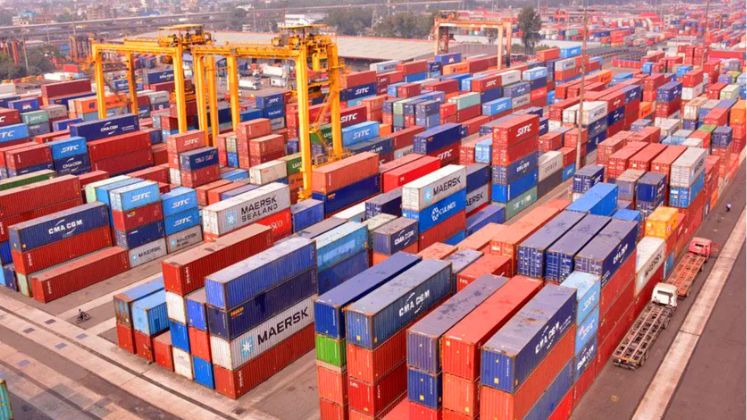
Bangladesh’s merchandise exports surged to US $ 4.77 billion in July, marking the highest monthly earning since November 2022 and representing a nearly 25% increase compared to US $ 3.82 billion a year earlier, according to the Export Promotion Bureau (EPB). The impressive growth comes amid a backdrop of improving external balances and a buoyant remittance inflow.
The surge was largely driven by the ready-made garment (RMG) sector, which posted US $ 3.96 billion in exports – an increase of 24.67% year-on-year. Leather footwear exports grew by 26%, although industry insiders highlighted ongoing issues related to port delays and corruption that hamper full sector potential.
The rise in exports coincided with a 29% year-on-year increase in remittance income in July, as more than 40 lakh Bangladeshis have gone abroad for work over the past four years. This combination of higher exports and remittances has helped ease pressure on the country’s foreign exchange reserves, leading to a return to a current account surplus in the recently concluded fiscal year 2024-25 after three years of persistent deficits.
Industry leaders attribute the export growth to a mix of seasonal factors, global market dynamics, and strategic shifts. Anwar-ul-Alam Chowdhury Parvez, president of the Bangladesh Chamber of Industries (BCI), emphasised that the growth was not driven by extraordinary demand or front-loading, but rather by the absence of disruptions seen in previous years, such as political unrest last July. “This is a seasonal rebound rather than an indicator of extraordinary demand,” he said, cautioning that exports might slow in August and September, which are typically lean months.
Parvez also noted potential impacts of the United States reducing reciprocal tariffs from 35% to 20%, suggesting that any rise in retail prices could lead major retailers like Walmart and Target to cut volumes, possibly resulting in a 30 to 35% drop in sales.
Meanwhile, industry experts point to global sourcing shifts and increased diversification efforts as factors behind Bangladesh’s export strength. Asif Ibrahim, vice chairman of Newage Group and a former BGMEA director, highlighted that international buyers front-loaded orders in anticipation of tariff hikes amid geopolitical tensions, particularly concerning China. This led to a significant volume of shipments in July, with traditional markets such as the US, EU, and Canada maintaining strong demand, and non-traditional markets like Japan, India, and Australia experiencing rapid growth.
Despite the positive figures, industry insiders warn of challenges ahead. Nasir Khan, chairman of Jennys Shoes, criticised ongoing port delays and corruption, which hinder the footwear sector’s full potential. “Bribe demands and bureaucratic red tape are holding back exports,” he said, pointing to unofficial lobbying networks and influential officials controlling key approvals.
Overall, the July export performance signals a promising start for Bangladesh’s export sector, with experts expecting stabilization and further growth from October onwards, as seasonal shipments of summer and Christmas products ramp up. The combination of improved factory compliance, efficiency, and global market diversification bodes well for the sector’s outlook in the coming months.






